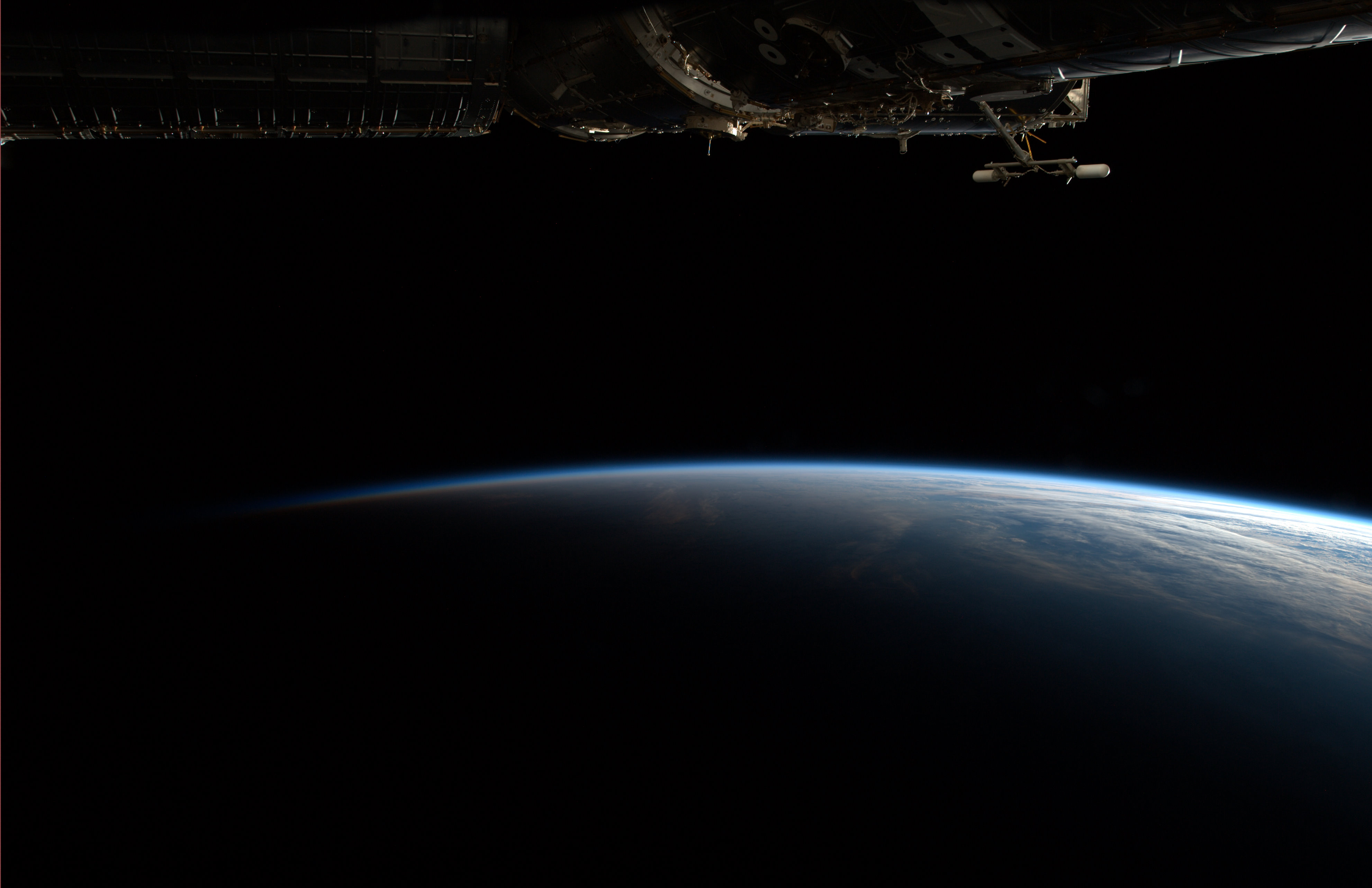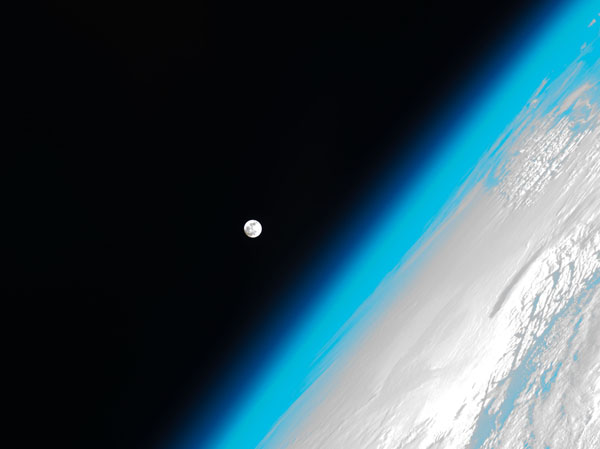Perpetual Twilight
The atmosphere on edge glows with a vibrant electric blue. Did van Gogh paint this scene?
Twice a year, near the winter and summer solstices, the orbit of space station nearly parallels the terminator—the fuzzy line separating day from night on the surface below. For a period of about a week, we live in what seems like perpetual twilight, being in neither full daylight nor full night. Our orbit follows the terminator, so that space station is constantly sunlit. From this vantage I can see both day and night simply by swiveling my head from left to right. But the night is not really dark, and the day is lit by low-angle rays from the Sun.
Geographic relief casts long shadows, and imparts stark contrast to features that are typically overlooked. Small ripples in sand dunes make high contrast striations across the bright desert landscape that look like Nature’s way of drawing with pen and ink. Geographic relief plays tricks on you. First you see the Grand Canyon as this deep scar. Blink your eyes and it is now a rippling bump. Thunderstorms cast shadows that look like they come from some new type of ray beam weapon. Airliners, their path defined by contrails, leave glimmering lines like snail trails in the morning dew. The gardens of Earth appear to have quite an infestation of snails.
The Moon sets in a counterintuitive way. From this vantage it moves nearly parallel to the horizon. Once I saw it slowly set, only to reappear in a few minutes. The Moon was visible for nearly the whole orbit.
The night side is equally fascinating. The atmosphere on edge glows with a vibrant electric blue. Did van Gogh paint this scene? I can see at least five, maybe six distinct layers of blue—perhaps a visual display of the classic atmospheric strata. Just past the terminator, rays of sunlight can be seen projected above the darkened limb of the Earth.
The most striking aspect of our atmosphere is not the palette of electric blue colors but the thinness of it all. Our atmosphere is a diaphanous veil; thin, fragile, transparent, and the only thing that protects us from the harsh vacuum of space. Too much atmosphere, and the planet is choked and suffocated. Too little, and it is exposed to the harshness of cosmic space. My vantage on the station gives me a deep appreciation of this fact.

